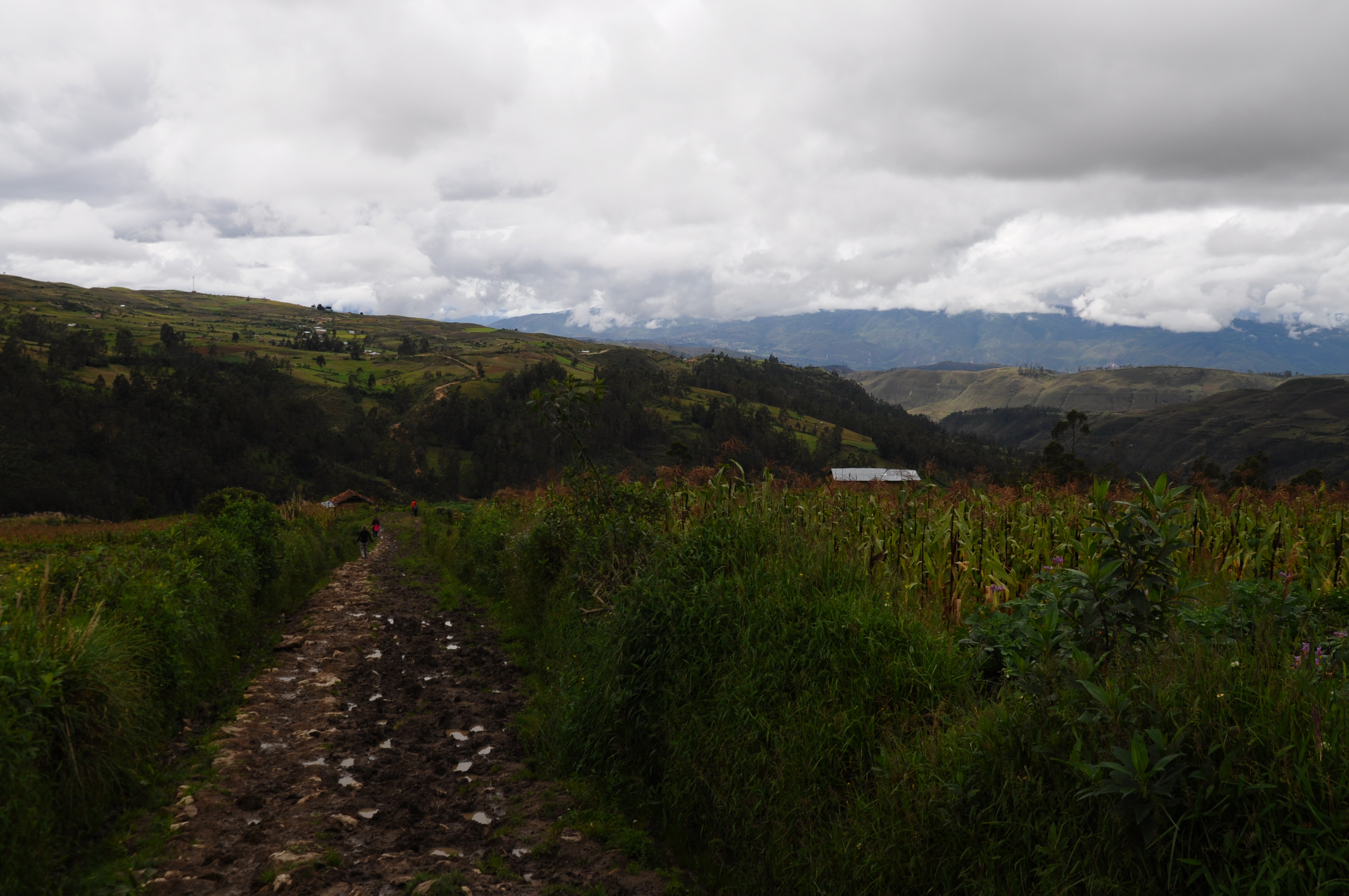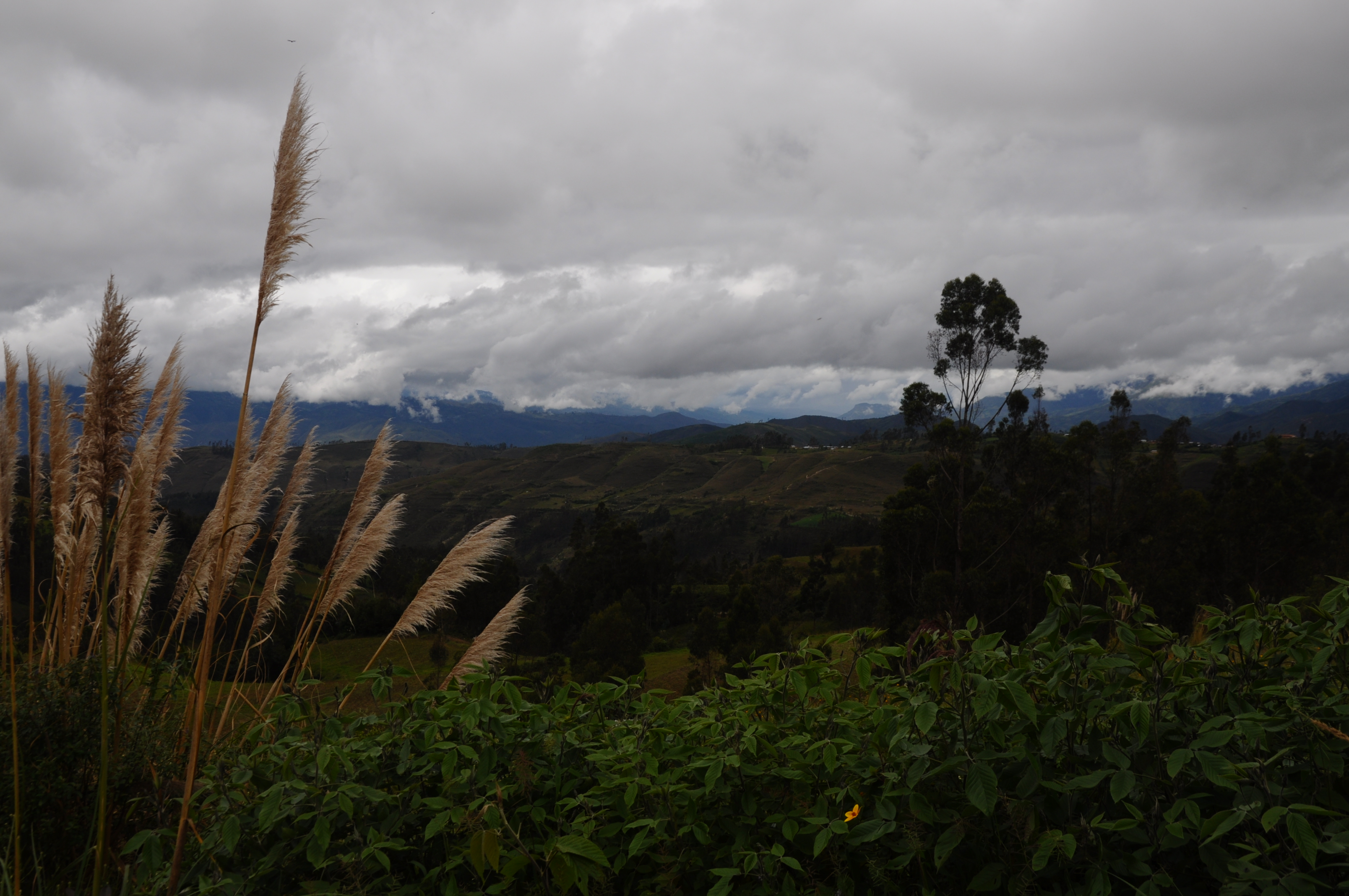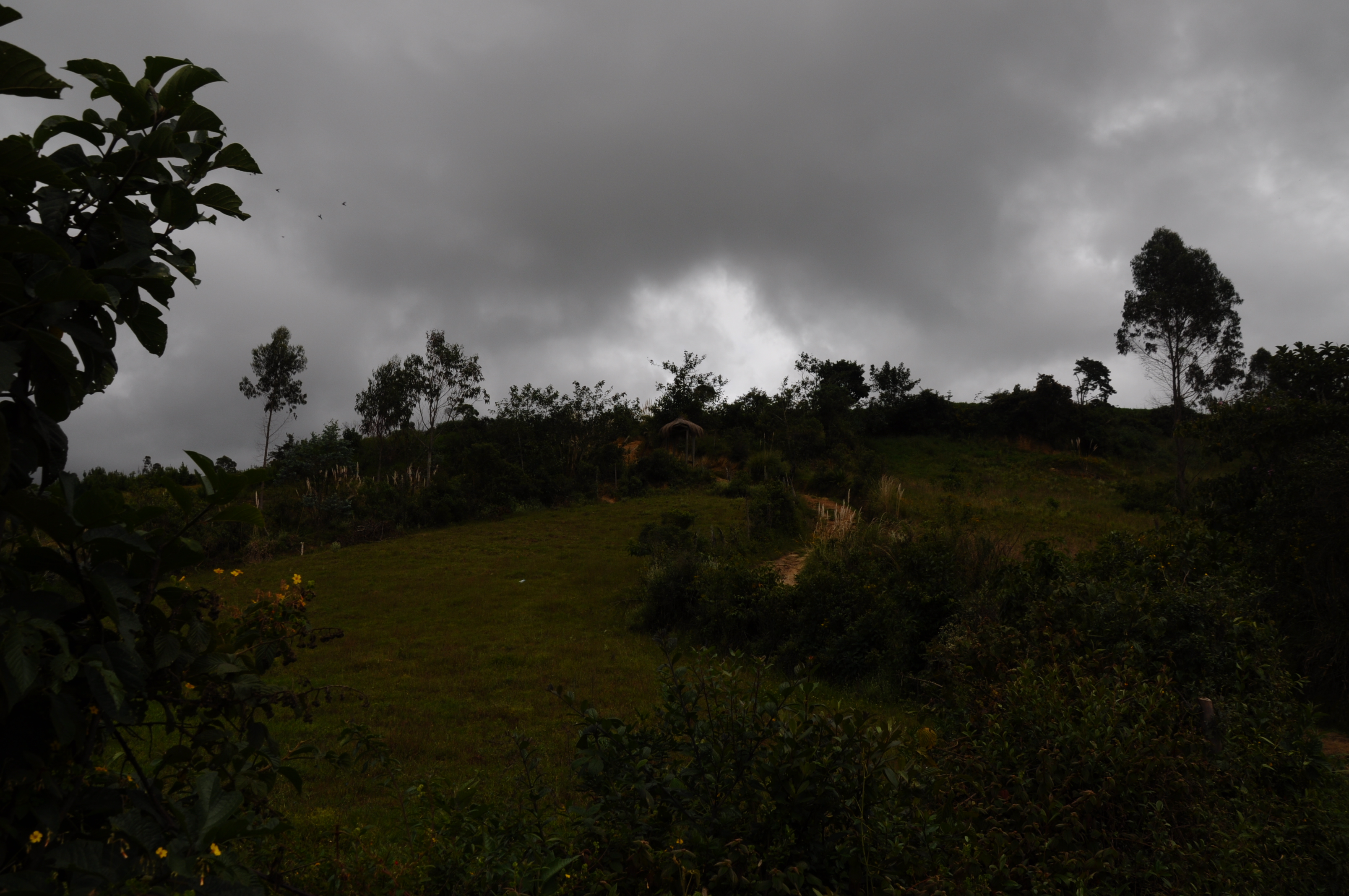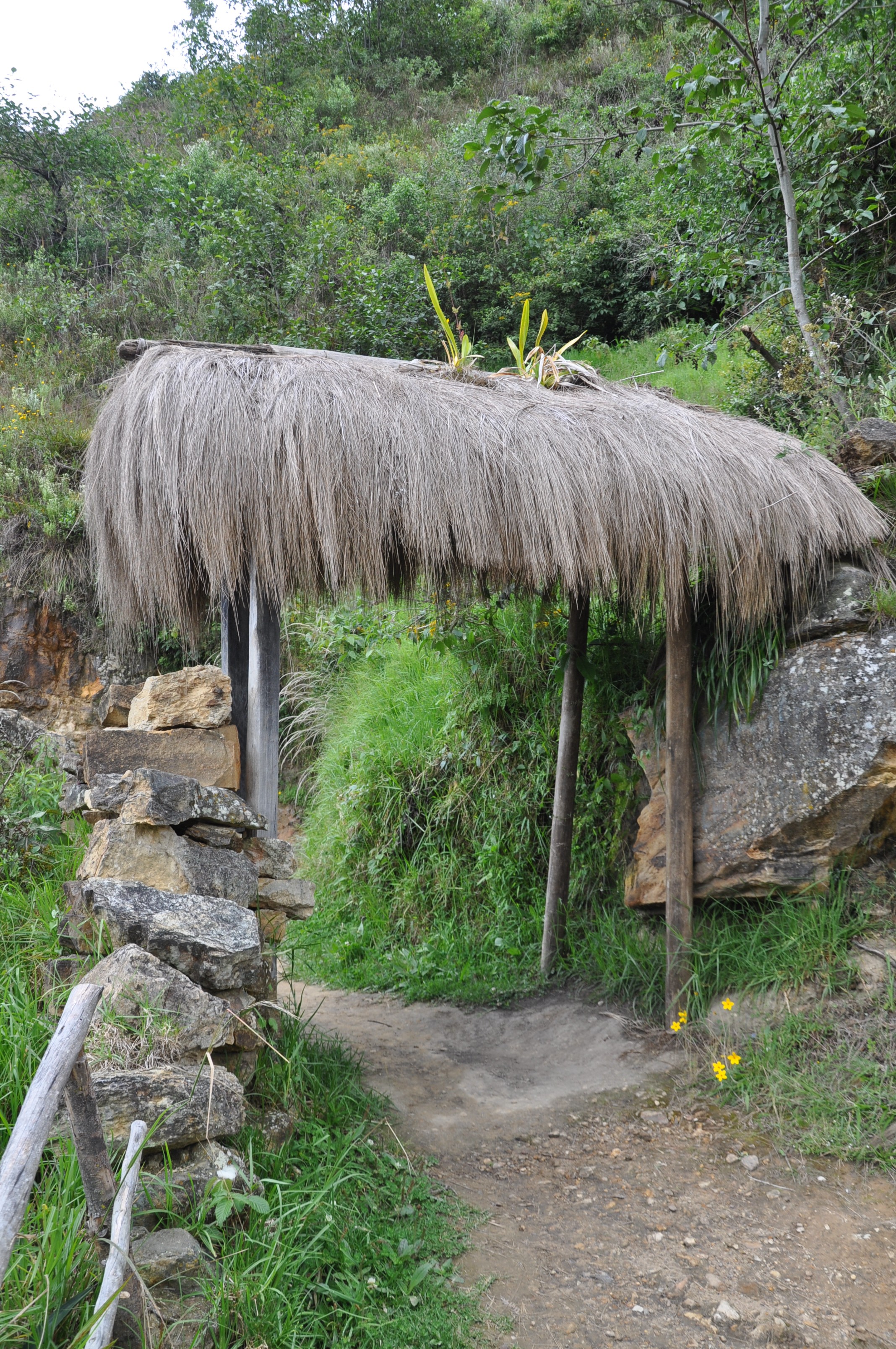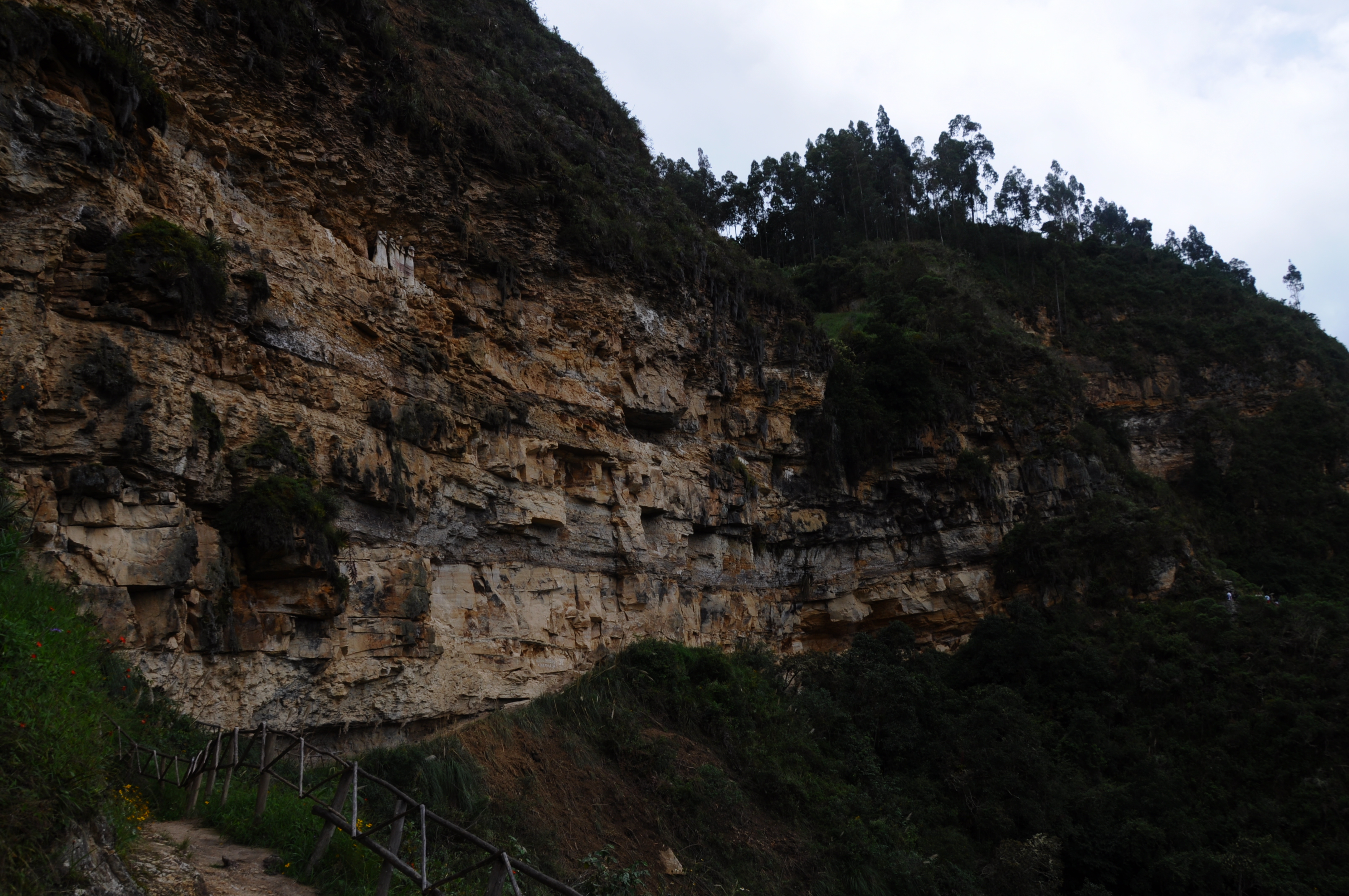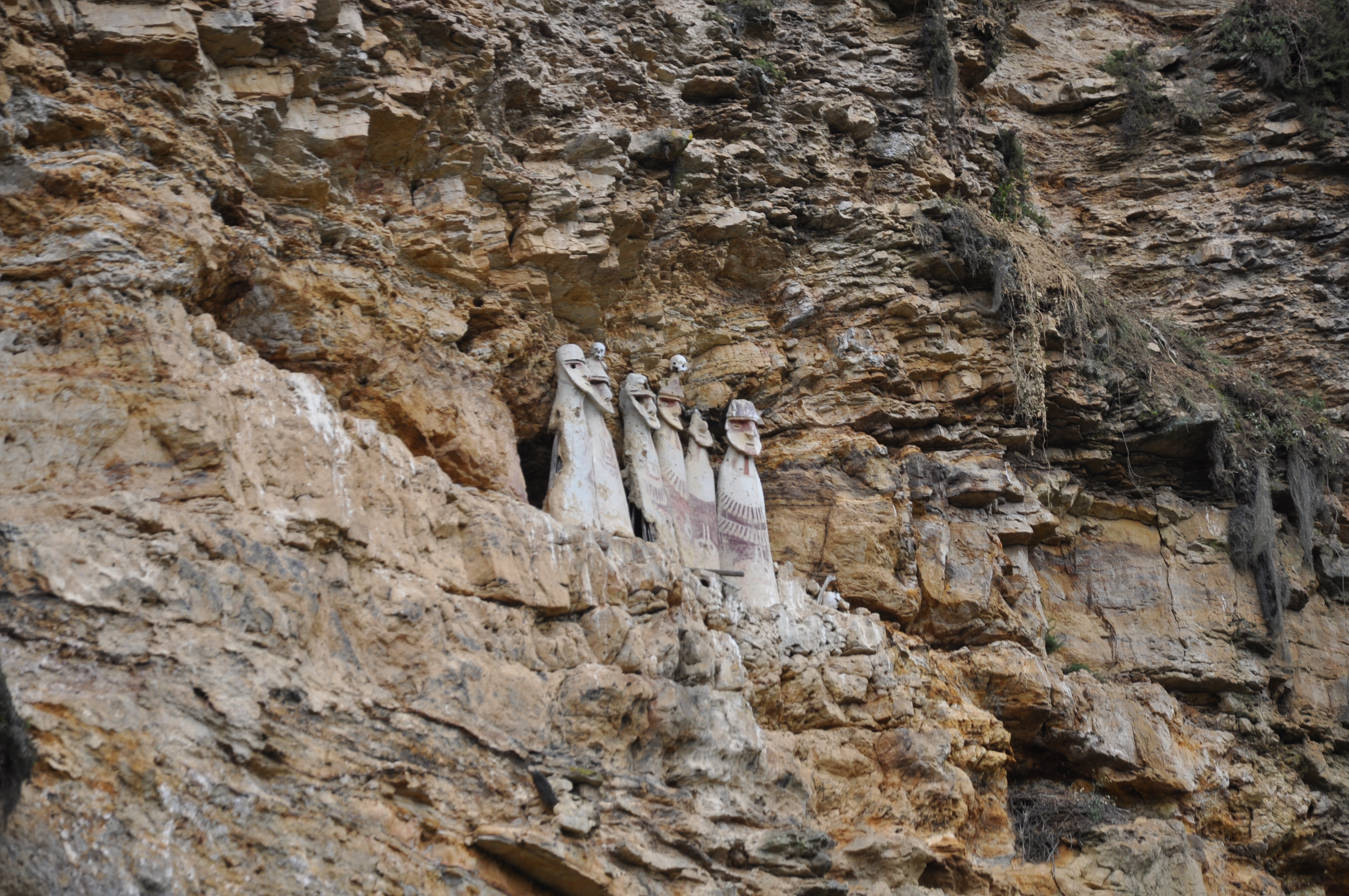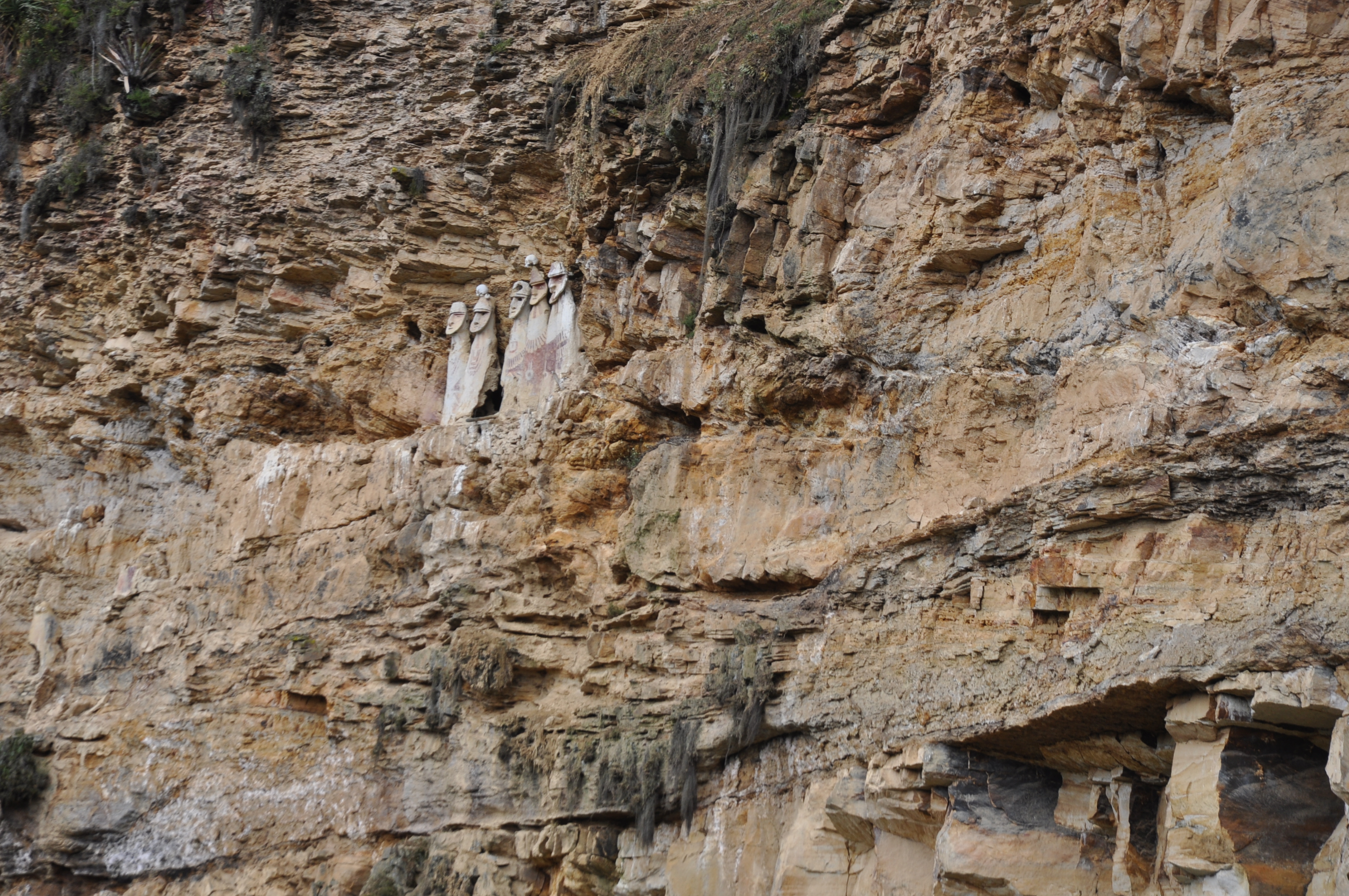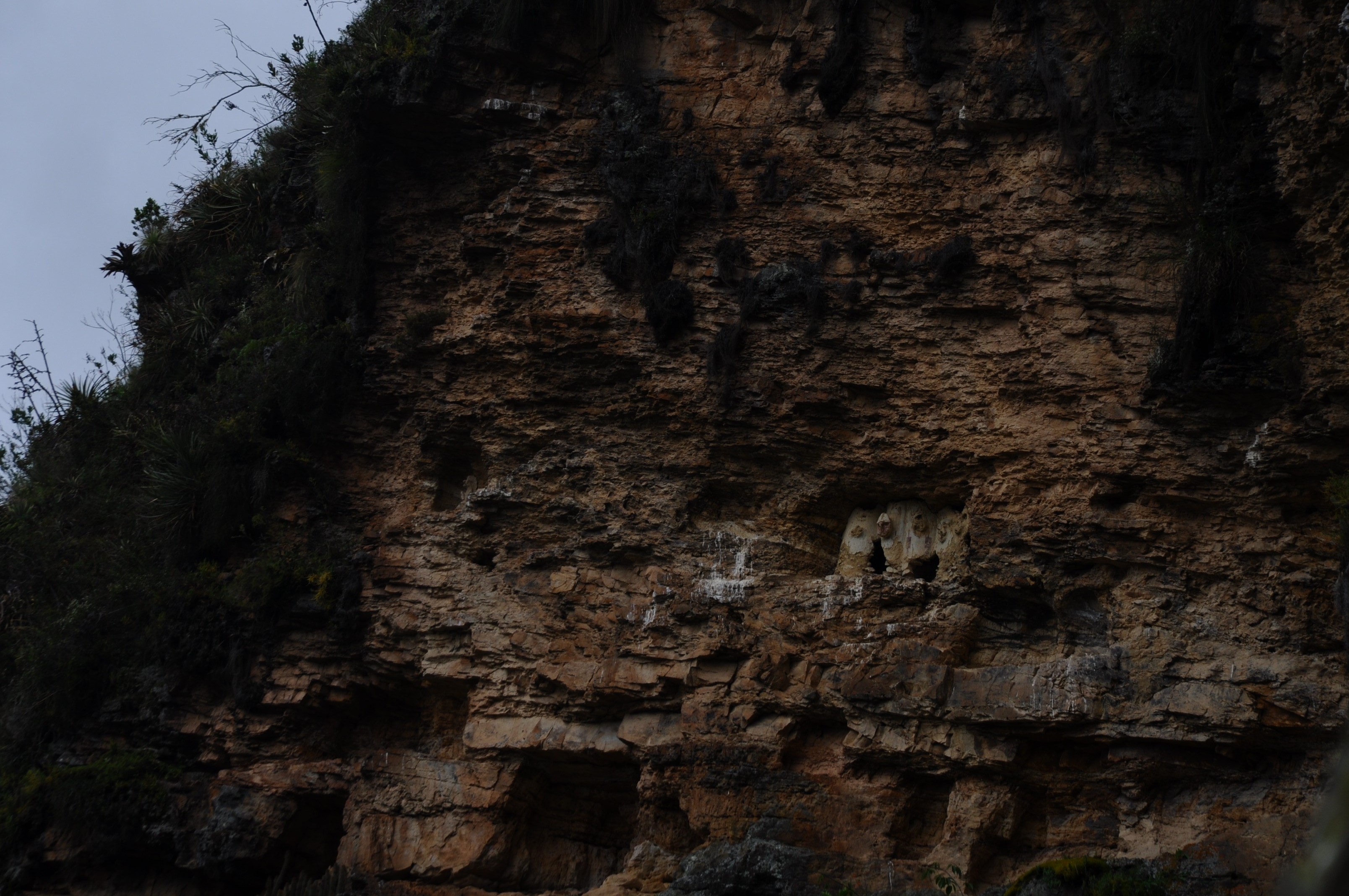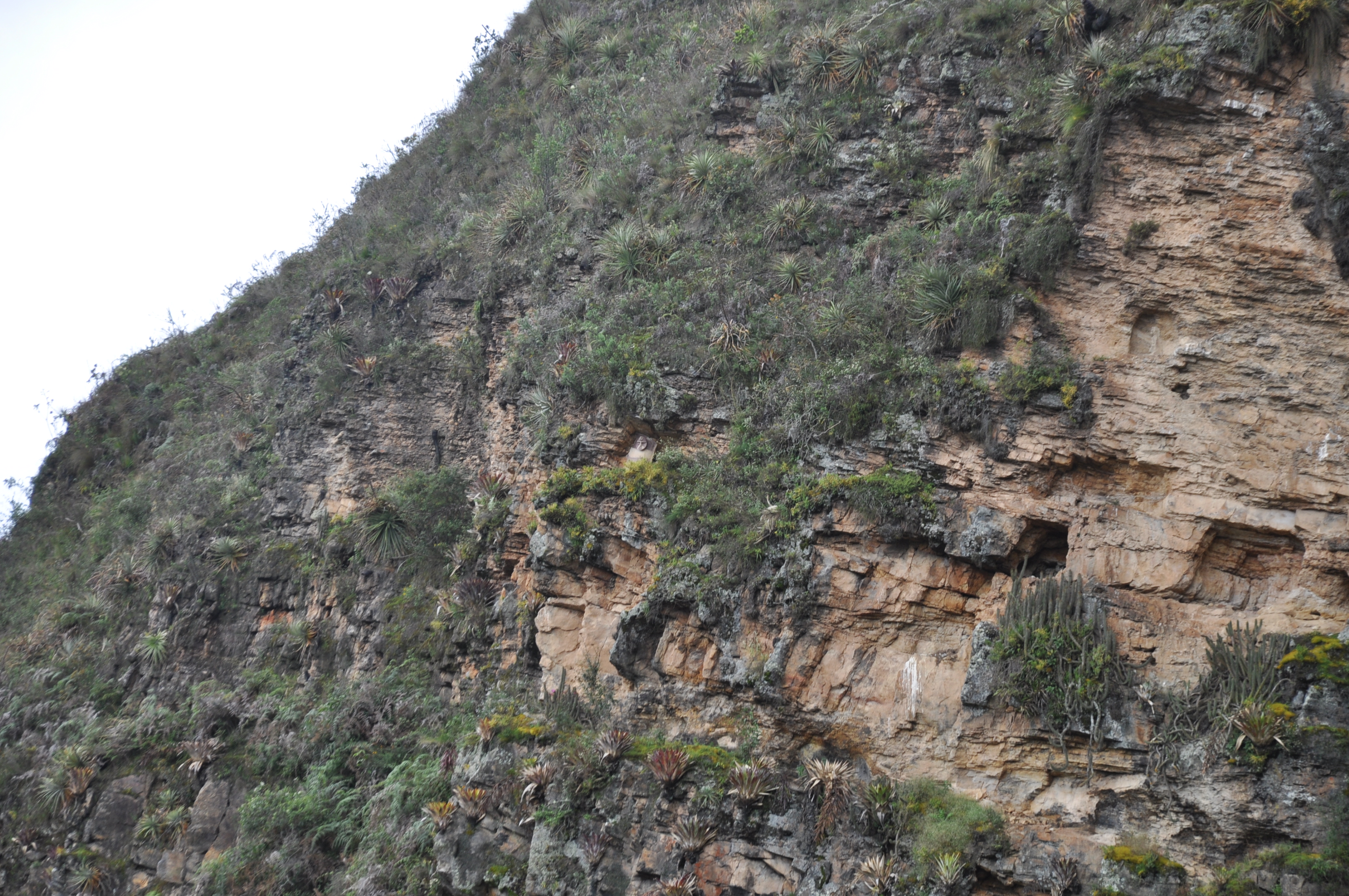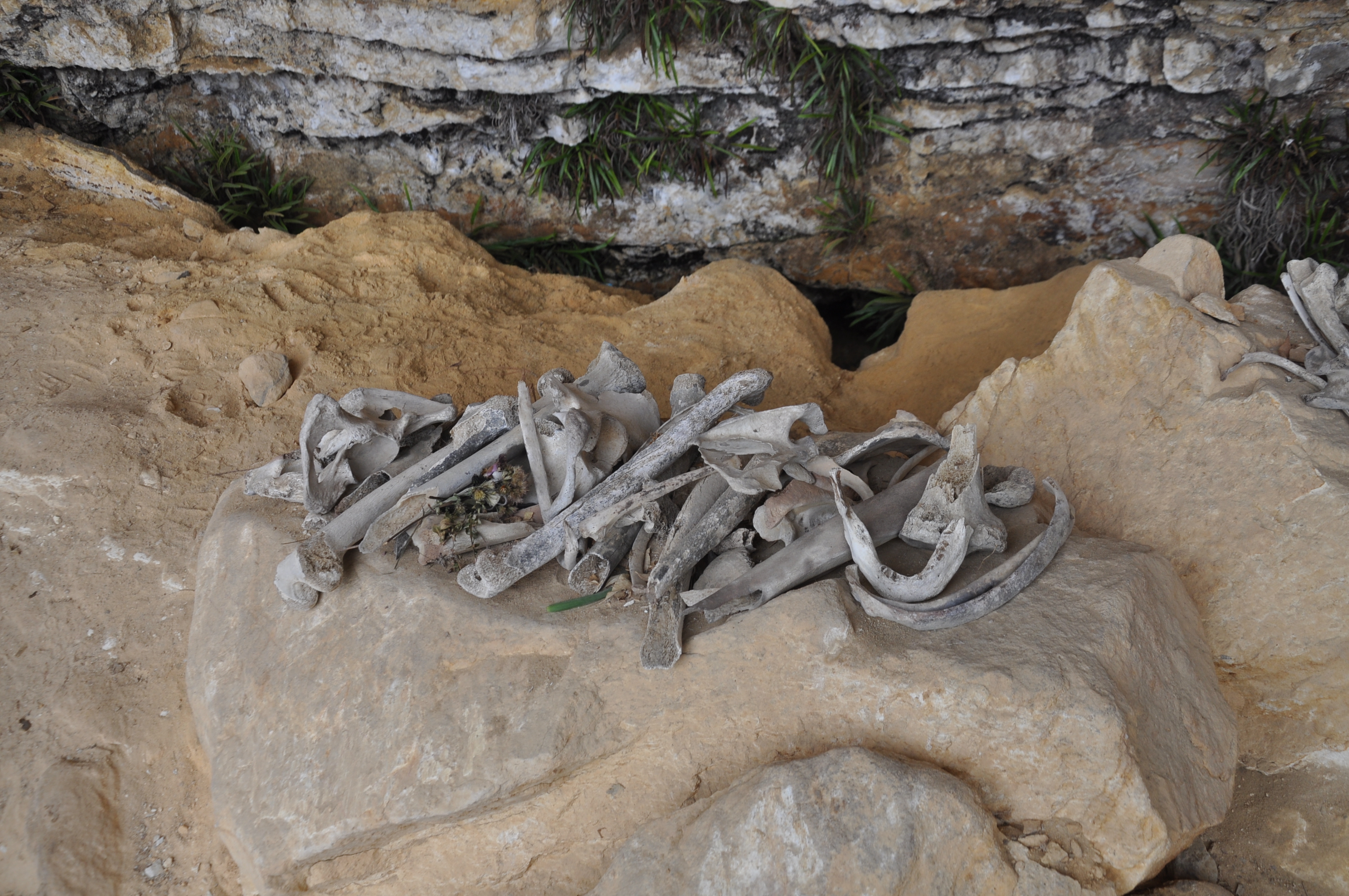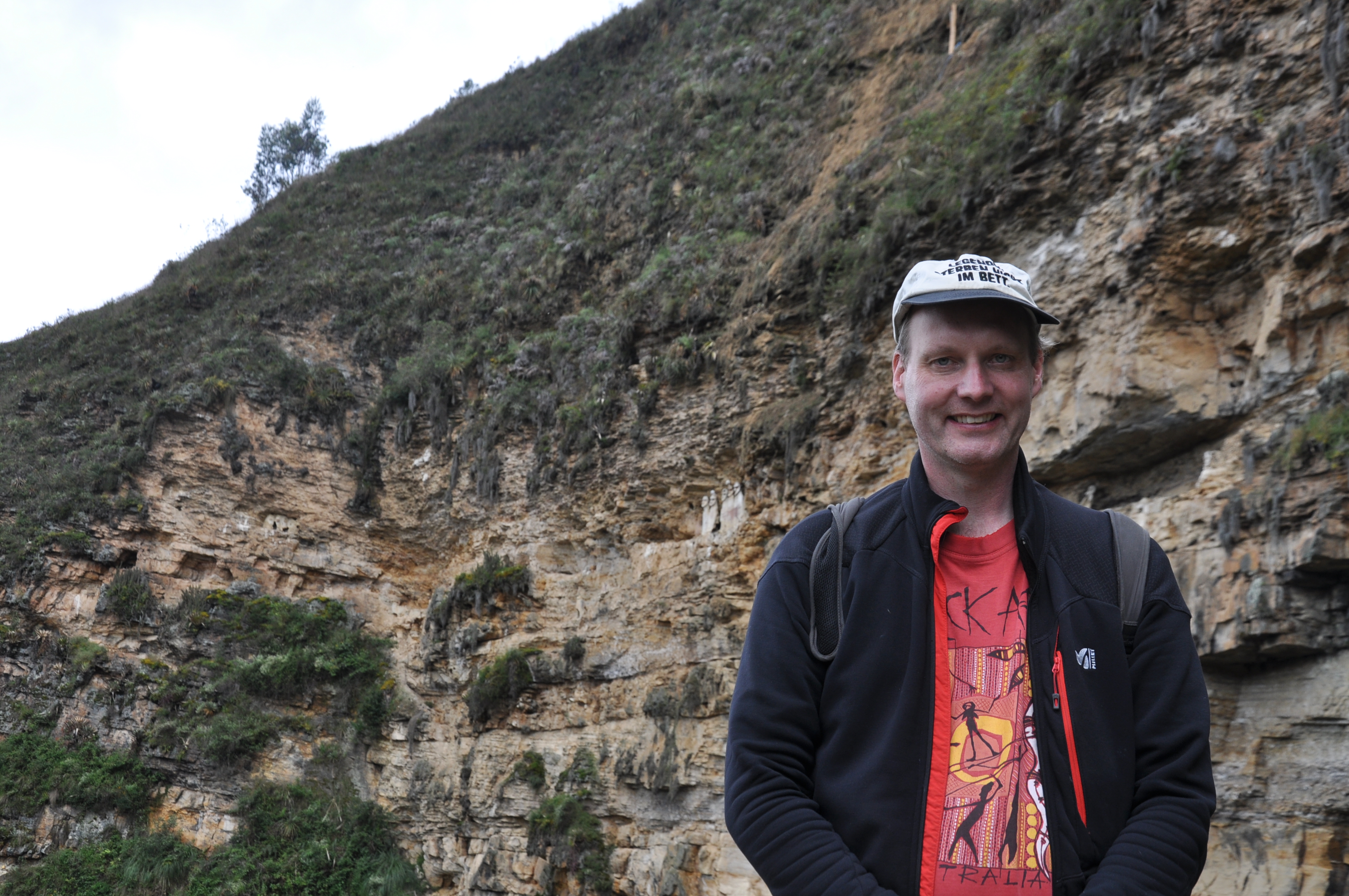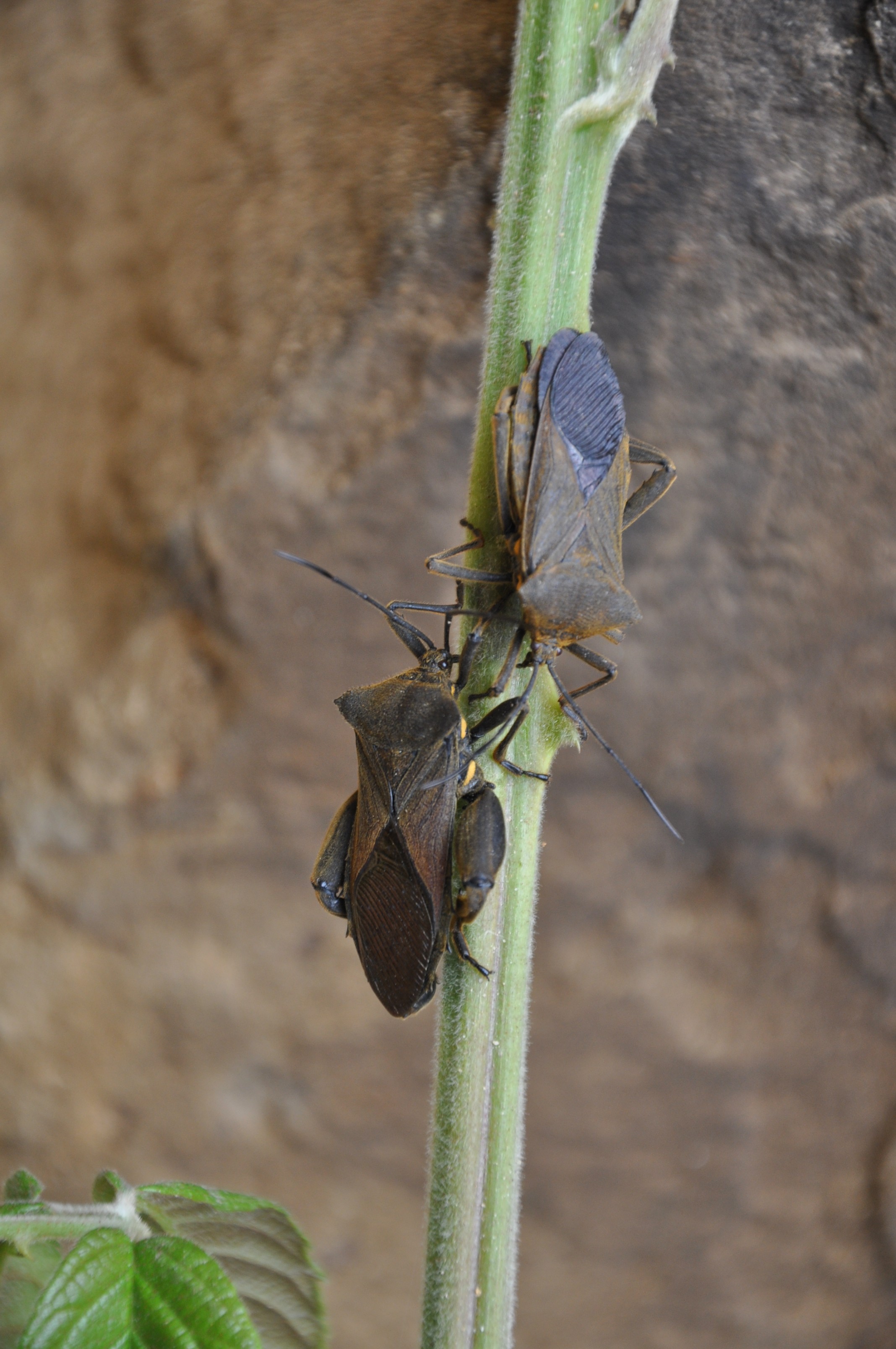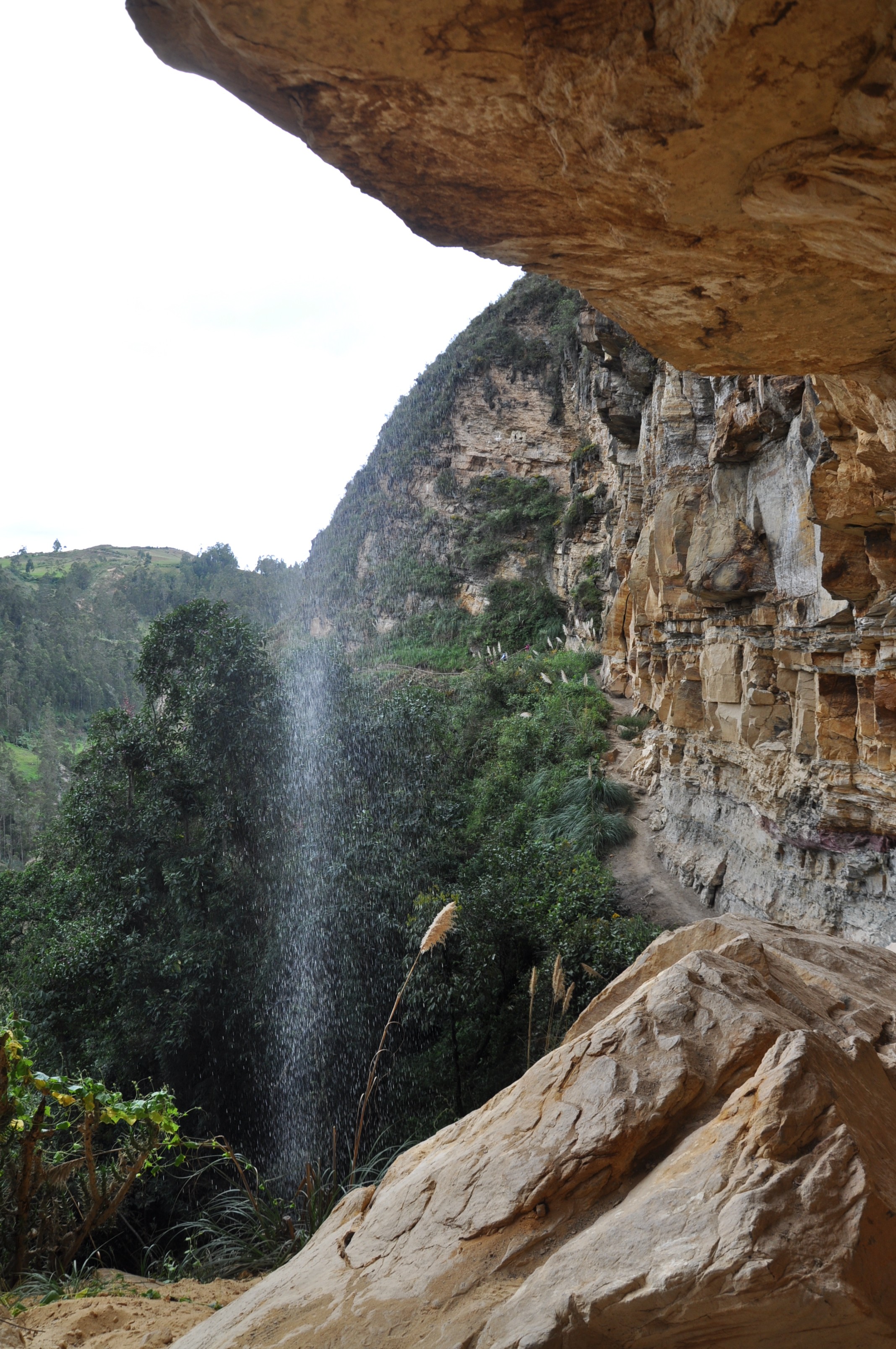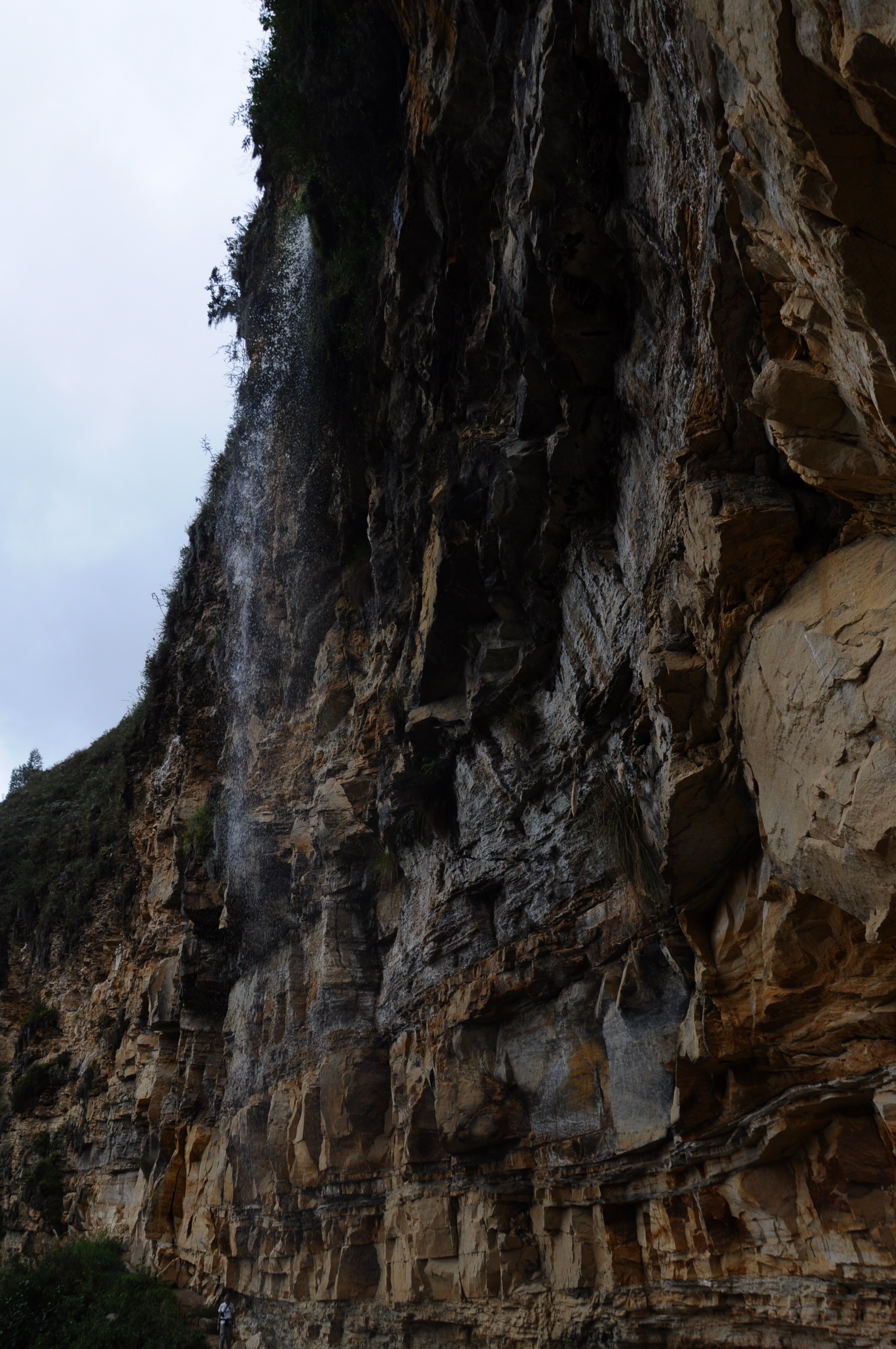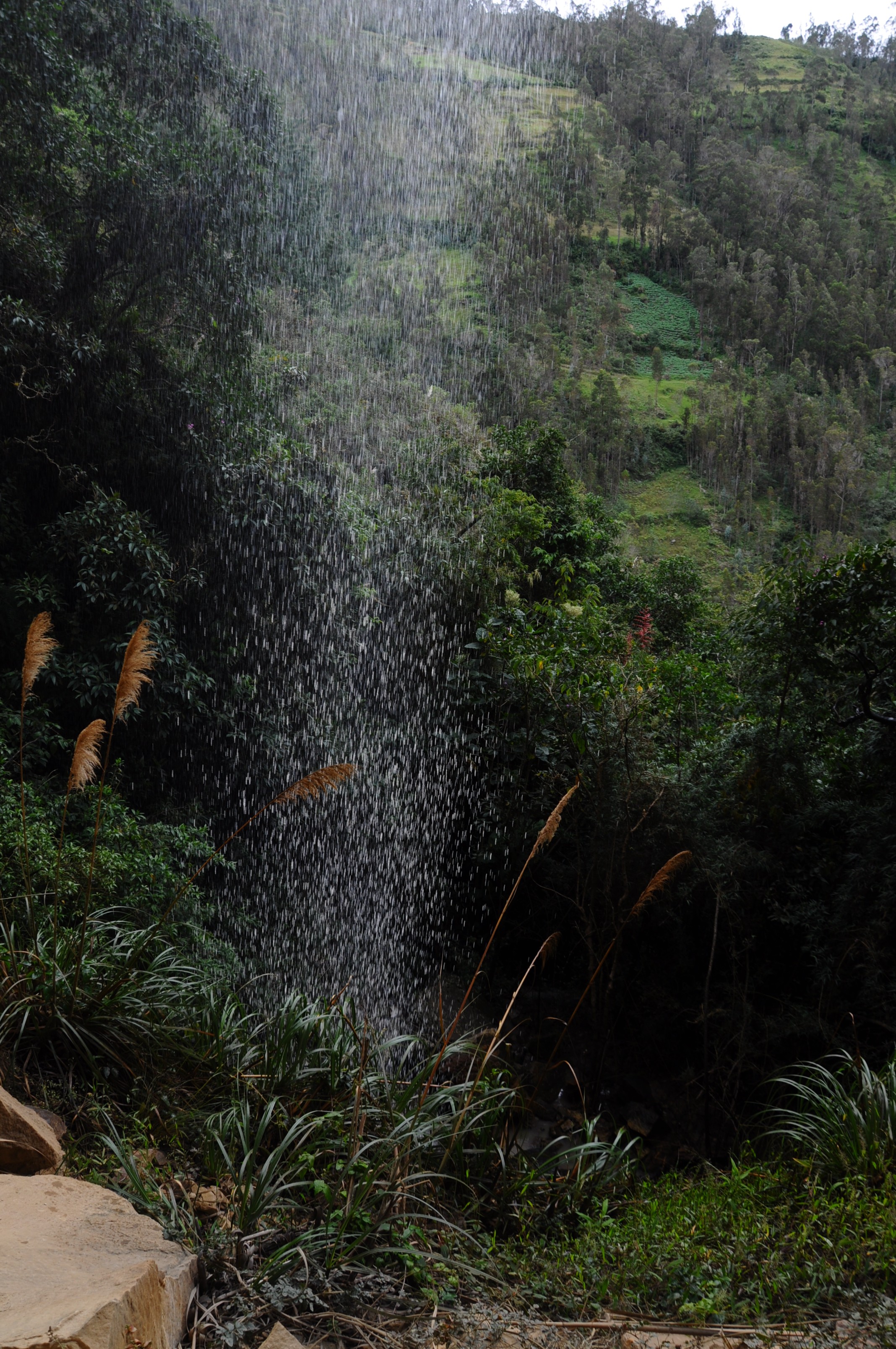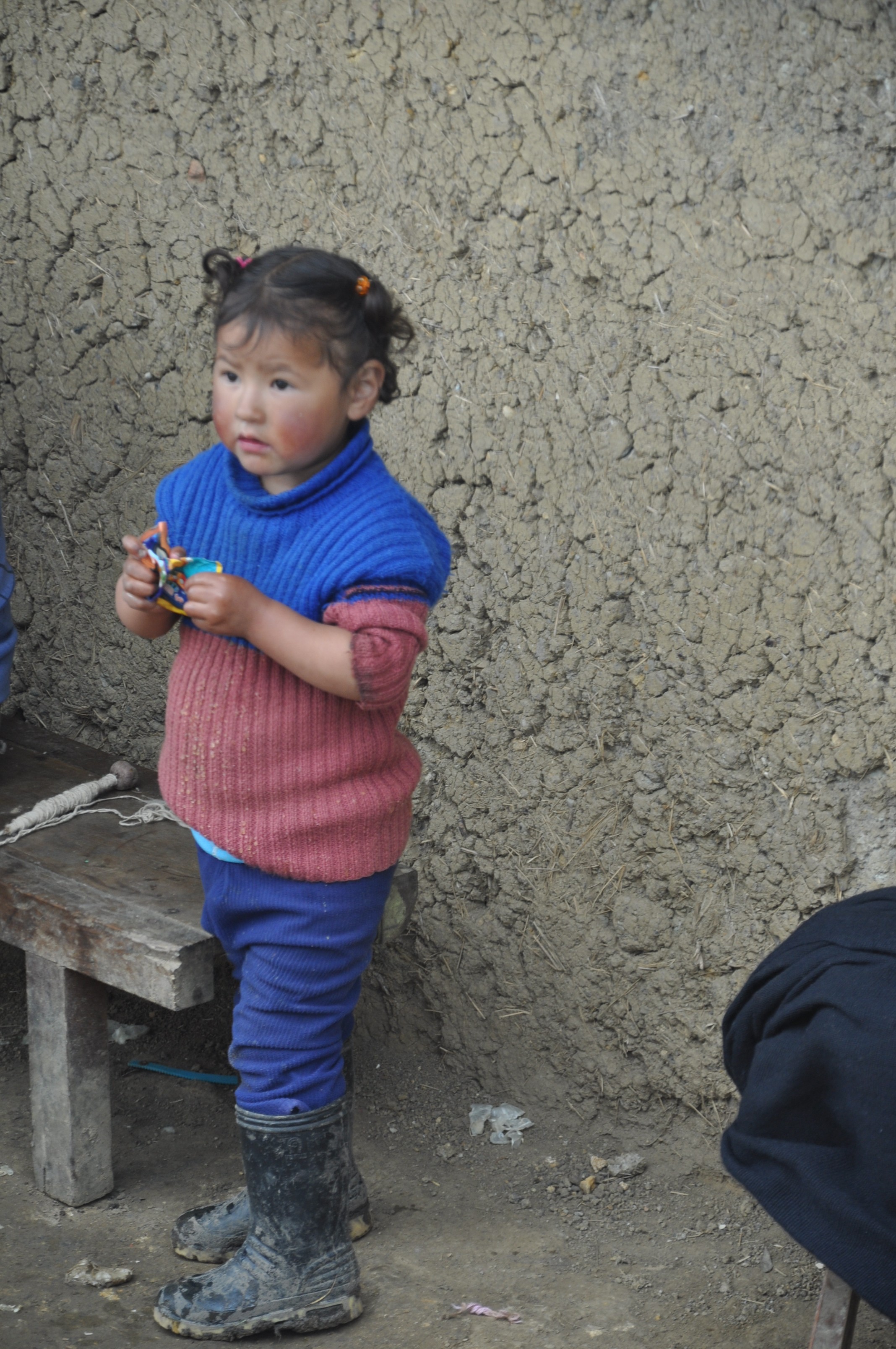Another day, more tours. After a strenuous bus drive with many curves, the tour arrived at the little village of Karajia. The sarcophagi are about 1 kilometer east of the village in a valley. It had rained heavily the days before, and the trail was slippery and soaked in mud.
The Sarcophagi of Karajia
Introduction
The sarcophagi, or “Purunmachos” as the locals call them, were build by a Chachapoyan community about 600 years ago into the wall of a ravine. Although known to the locals, it was not until 1984 that Archaeologist Federico Kauffmann discovered them, and made their existence known to the scientific community.
The Sarcophagi
The sarcophagi are constructed from clay, straw, and gravel that was modelled on top of a wooden structure, and painted. Each sarcophagus houses one mummified corpse in foetal position. The gender of the deceased is supposedly also painted on the sarcophagus. I was however not able to make it out as they are not really accessible (next time, I will bring my quadrocopter for some close up pics :-)). Some of the tombs have human skulls attached to the top. These are thought to be trophies of enemies or possibly human sacrifices.
In Karajia, there are 3 clusters of sarcophagi. The most visible one had originally 8 sarcophagi. The third and the eight one collapsed during earth quakes. It is believed that this kind of burial was only reserved for important persons within the community. The sarcophagi of Karajia are not the only ones in the Chachapoyan settlement area, but the nicest. There are others on the western bank of the Utcubamba River north of Kuelap.
